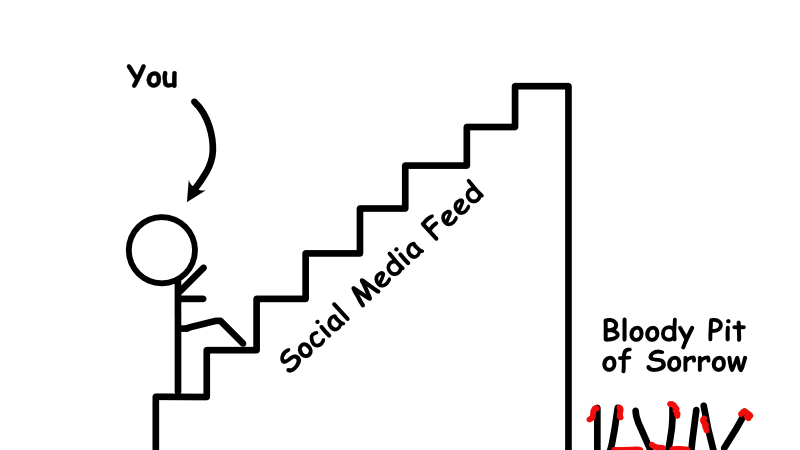I left social media a month ago, and I am feeling better. Not great, let’s be honest. Not everything that bothers us in modern society is because of M&Ms (the Mark and Musk duo).
Firstly, what did I cut out?
Over the past 15 years, my social media outlets included:
- TikTok (on and off – never post)
- Instagram (on and off – casual post)
- YouTube (yes, it is a social media)
- X (no, X is not Twitter)
- Hacker News
Of the above, I feel that Instagram and X are the worst—the first being highly addictive and the latter being so off the rails that it crossed the ‘free speech’ threshold a long time ago. From the above list, I kept only two things: LinkedIn and YouTube.
LinkedIn is sadly a must for any professional who is not stuck in their day job. It has become the de facto professional social network. Over the past few years, it has evolved into more of a social media platform, with feeds full of polished selfies from fantastic remote work locations or personal achievement brags. It is an engagement game some of us have to play.
On the other end of the spectrum, there is YouTube. The palpable YouTube, not the cesspool that is YouTube Shorts. I use YouTube exclusively with the Focused YouTube extension, removing comments, subscriptions, and with some success, Shorts. Without aggressive recommendations and without Shorts, and with a curated list of resources (deliberately not using the word “creators”), YouTube is a great source of knowledge. Judicious application of skepticism is still necessary, but it remains very useful.
So here I am: LinkedIn because I have to, and heavily redacted YouTube.
So how does it feel?
To be honest? It feels fantastic! Way less FOMO. Better self-esteem without implicit comparisons to others’ polished, often fake success stories. The best effects, in my case, came from dumping Instagram and X.
Instagram is like a Sorority Girl: attractive on the outside but an empty shell inside. A hollow feed of feel-good reels that still ends up making you feel like crap in the end. I guess, good job Mark; you make billions of people feel like crap.
X had a different use case for me. It was an access point to creators and makers. As an entrepreneur, I adored the early days of the Wild Wild West build-in-public movement spearheaded by Pieter Levels. Today, Levels and his acolytes, and the army of devfluencers led by Primagen, are just a toxic pot of self-proclaimed righteousness. Not a day goes by without those who do not agree with the narrative being squashed by an army of trolls. Add to that constant attacks from right-wing paid ads (in my case promoting the far-right AfD in Germany), and you end up with one of the most vile places on the Internet. And don’t get me started on the Vercel circlejerk.
I would say, congrats Musk on destroying the Twitter we knew, but in this case, it is a combined effort of Musk himself and techbros. RIP Twitter.
If you were to shape your opinions and lifestyle based on these two sources of information and feedback, you would be building the 1000th OpenAI-based AI startup, lifting weights and blasting your opinions like Noah reading his tablets.
Failed Promise
As the trend goes, I looked for alternative social media. BlueSky and Mastodon were the main contenders. I even supported Mastodon financially for many months.
The problem?
They are their own echo chambers without real, critical discourse. They are still social media. They are as biased as X/Instagram and Facebook. Not by design, but by being an alternative to the aforementioned. And more importantly, they remain just social networks—a flaccid representation of interpersonal connections.
Less is More
Less social media is more life and meaningful work. Period.
